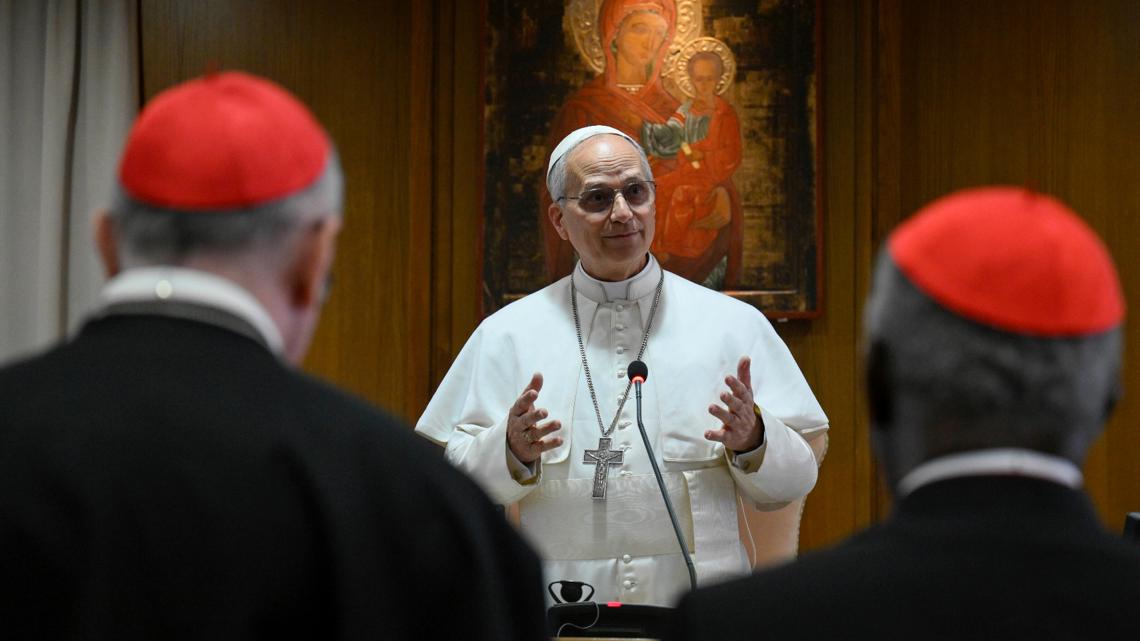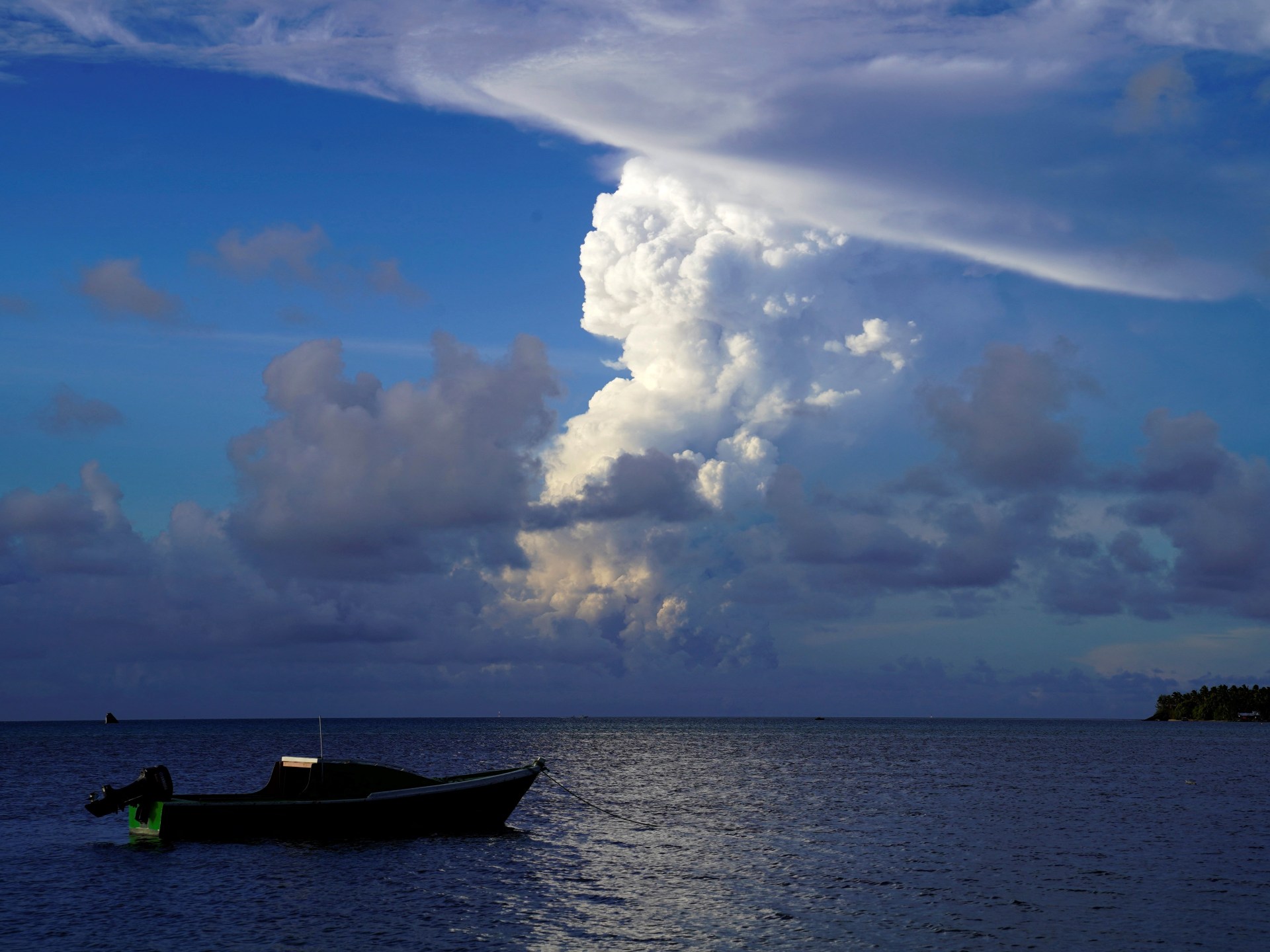In the case of India, the absence of any uniform linguistic, religious or ethnic identity meant that the construction of the nation’s territorial claims had to be built around something other than these clearly defined identity markers. At the same time, this marker of Indian nationality would also need to be expansive enough to lay claim over the vast territorial expanse of British India. Consequently, nationalists from diverse backgrounds have invoked an idea of ‘historical, cultural, and civilizational ties’ to legitimate Indian nation state’s borders. While what constitutes these ties and what is its scope has been a matter of constant debate within Indian nationalism even to this day, the primordial nature of a shared national unity is beyond question within Indian political culture.
This paper will argue that in tracing the ancient foundation of the Indian nation, most of the Indian nationalists, whether from Hindu nationalist backgrounds or being self-avowedly secular, drew upon explicitly Hindu traditions, history, and imagery. This was done not simply as part of an elite-driven modern project of creating an abstract nation, but it also showed considerable accommodation and appropriation of prevailing religious and regional modes of belonging. Moreover, apart from appropriating some of these contemporary modes of belonging, nationalists also had to work towards tracing the origin point of the Indian nation. This search for origins invariably led to an immutable definition of the Indian nation that had been in existence since antiquity and this antiquity was more or less Hindu in character. The final result of this exercise was the solid entrenchment of inviolability of India’s ‘sacred geography’ within the political culture of India.
Hindu legacy of the Indian National Congress
During the anti-colonial struggle of the early 20th century, a significant challenge in framing a claim for Indian independence was to demonstrate that the people residing within the boundaries of British India could constitute a national community. This claim would, as a result, entitle them to the right of national self-determination, which in turn paves the way for independence from British control. While many Indian nationalist leaders and intellectuals proposed ideas around Indian national identity, the ideas that emerged from Congress Party are particularly important to examine as not only was it a principal force in the anti-colonial struggle, but also had a hegemonic status in politics of post-colonial India (at least till the late 90s).
While Pt. Jawaharlal Nehru assumed a commanding role within the Congress party and Indian politics after 1950, it must not distract us from the various strands of Hindu traditionalism that were present within the Congress before Nehruvian domination and continued their presence even under his leadership albeit in a much-diminished role. For instance, William Gould has shown that Congress within the United Provinces during the 30s and 40s actively collaborated with Arya Samaj and employed a distinctly Hindu vocabulary at local temples, fairs, and festival celebrations to mobilize the masses. Powerful Hindu traditionalist figures of the Congress like Purshottam Das Tandon, Madan Mohan Malviya, Sampoornanand, and Govind Ballabh Pant were prominent within the politics of the United Provinces and were key to the popular mobilization.[1] Similarly, within the context of Bengal, Joya Chatterji has demonstrated the close collaboration between Congress and Hindu Mahasabha throughout the 40s. She further argues that collaboration between both of them was crucial in bringing about the partition of Bengal on religious lines.[2]
Outside of the United Provinces and Bengal, prominent Hindu traditionalists of Congress included Rajendra Prasad, K.M. Munshi, and most prominent of all, Mahatma Gandhi. A plethora of local Hindu volunteer organizations actively cooperated with Congress in popularising campaigns for the boycott of foreign cloth, upliftment of lower castes, and actively engaged with Congress’ election campaign of 1937. Congress’ message was frequently disseminated through local temples and on the occasion of Hindu religious festivities. Even as early as the 1880s and 1890s, Congress leaders along with groups like Arya Samaj had been advocating for the protection of cows, which were considered the priceless possessions of India and a symbol of India’s ritual purity.[3]
While religious and mythological symbolism can be easily seen as a part of Congress’s strategy to become a popular organization, it was also part of an attempt to find the origin and foundations of an Indian nation. Even before the mass mobilization became a feature of Congress’s politics, prominent leaders like Bal Gangadhar Tilak, Bipin Chandra Pal, and Lala Lajpat Rai were talking in terms of the Hindu community as a ‘nation’. (Dasgupta) The legacy of finding these foundations is visible even in the Nehruvian conception of the Indian nation.
While Nehru’s conception is not imbued with religious symbolism towards which he showed a certain discomfort and opposition, it certainly does trace the foundation of the Indian nation through an explicitly Hindu origin point. In that sense, we can see that Nehru’s conception of the Indian nation’s territorial boundaries has much in common with the Hindu nationalist imagination of the same. Moreover, with significant sections of Congress having employed Hindu symbols for the articulation of national identity and popular mobilization, such an origin point was never really up for contestation, even for Nehru.
Nehruvian nationalism, Hindu nationalists, and Indian territoriality
Nehru, while showing an acute awareness of the absence of a single tying identity or characteristic that could underpin Indian identity, was working with a framework within which the existence of an Indian nation or Indian identity was not in question. Underlying this fact, Nehru in his book Discovery of India writes:
“…there is no mistaking the impress of India on the Pathan, as this is obvious on the Tamil. This is not surprising, for these borderlands, and indeed Afghanistan also was united with India for thousands of years…Changes of religion made a difference, but could not change entirely the mental backgrounds which the people of those areas had developed…She was like some ancient palimpsest on which layer upon layer of thought and reverie had been inscribed, and yet no succeeding layer had completely hidden or erased what had been written previously. All of these existed in our conscious or subconscious selves, though we may not have been aware of them, and they had gone to build up the complex and mysterious personality of India.”
(Nehru, 61)
The spirit of the above lines is also demonstrated within the narrative structure of Discovery of India, which aims to celebrate the cultural and intellectual contributions made by different religious and ethnic groups to the ‘Indian psyche’. But this notion of an assimilative ethos and syncretic cultural consciousness of being Indian could not take shape of a nation-state without a territorial demarcation to reinforce it. This territorial notion was extracted from a primordial past that formed the very base of Nehru’s ‘palimpsest’. The sources of this primordial past belonged mostly to Hindu religious texts and archaeological monuments. This in turn meant that Indian territorial limits would be defined through a distinctly Hindu heritage and vocabulary. A clear expression of this kind of territorial definition of India came from Nehru in one of his letters written to Zhou Enlai in 1963, as follows:
“The Himalayas have always dominated Indian life, just as they have dominated the Indian landscape. One of the earliest Sanskrit texts, though its date is uncertain—the Vishnu Purana—makes it clear that the Himalayas formed the frontier of India. It states that the country south of the Himalayas and north of the ocean is called Bharat, and all born in it are called Bharatiyas or Indians.… The earliest reference to the Himalayas is in the Rig Veda, which was written about 1500 B.C. It states that the Himalayas symbolize all mountains (10th Mandala, 10th Adhyaya, Sukta 121.4). The Kena Upanishad, written sometime about 1000 B.C., speaks of Uma the daughter of the Himalayas—Umam haimavatim”
(Eck)
Consequently, while in the larger picture of defining Indians and Indian nationalism, Hinduism is merely one of the traditions that have shaped its past and shaping its present, it is central to Nehruvian nationalism in asserting sovereignty and territorial rights. According to Nehru, people residing within the above-mentioned territorial boundaries continue to remain Indians despite the change in religion and diversity of languages and ethnicity.
On the other hand, Hindu nationalist tradition, unlike Nehru, accord much more space and primacy to the Hindu past and traditions in defining the present Indian national identity. Hence, they arrive at a nearly identical scheme of defining India’s territorial extent as outlined by Nehru. This is demonstrated within the writings and speeches of Vinayak Damodar Savarkar and Madhavrao Sadashivrao Golwalkar, both of whom have pivotal roles in defining the political vocabulary of Hindu nationalism. For instance, while defining his conception of Indian territory, Savarkar wrote
“We have met with no better attempt to define our position as a people than the terse little couplet in the Vishnu Puran- The land which is to the north of the sea and the south of the Himalaya mountains is named Bharata inhabited by the descendants are Bharata.”
(Savarkar, 7)
Similarly, Golwalkar, while asserting Hindu claim over the Indian nation, also arrives at a similar territorial demarcation as follows:
“Hindus came from nowhere, but are indigenous children of the soil always, from times immemorial and are natural masters of the land…And we were one nation- Over all the land from sea to sea one kingdom! – is the cry of the Vedas!”
(Golwalkar, 59)
As discernible from the above assertions, for both Golwalkar and Savarkar, an important role has been prescribed to the present inheritors of this geography, who have been called ‘descendants of Bharata’ and ‘indigenous children of the soil’. In both of these cases, these inheritors are Hindus and adherents of other religious traditions born in India (like Sikhism, Jainism, and Buddhism). Thus, there is a notable exclusion of Muslims and Christians within this definition, something that Nehru does not do despite arriving at the same territorial definition.
The similarity in the territorial notions of Savarkar, Golwalkar, and Nehru is quite remarkable if one takes into account the vehement opposition that Nehru and Hindu nationalists showed toward each other throughout their political life. Consequently, this convergence of opinion around conceptions of Indian territory meant that it did not remain merely a theoretical assertion that could be shed away with the waning of the public memory of the anti-colonial struggle. Rather, as noted by Ashutosh Varshney in his paper on dominant conceptions of nationhood in post-colonial India, the sanctity of India’s territorial boundaries has remained a stable feature of the political culture. Varshney further argues that, while Indian nationalists have been contesting the relative role of culture and religion in defining national identity, the concept of a ‘sacred geography’ was never contested and has remained central to the political culture of India (Varshney 229-230). Hence, even though Hindu nationalist groups like Hindu Mahasabha and Bharatiya Jana Sangh did not wield any appreciable power either in states or central government for the first two decades after independence, the examination of Nehru’s stance and a considerable presence of Hindu traditionalists within the Congress makes it is hardly surprising that this concept would acquire unquestionable salience.
How this notion of ‘sacred geography’ manifested itself within Indian political culture can be summed up by what Sankaran Krishna has called ‘cartographic anxiety’ of preserving and defining the national frontiers. Krishna argues that this anxiety is born out of the country being suspended between ‘former colony’ and ‘not yet a nation’. The Indian nationalists, therefore, were caught in a process of transforming the polity whose frontiers were defined by colonialism into one whose borders conform with what can be considered a national community (Krishna 508).
At this juncture, it is pertinent to ask if the nationalist conception of sacred geography was entirely a by-product of colonial modernity, or were there certain ideas that form a bridge between our understanding of pre-modern and modern notions of Indian territoriality. While the above account may suggest that Indian nationalists were building up their claim solely based on a convenient reading of ancient texts and history and not taking into account the contemporary realities of Indian cultural practices; such an understanding wouldn’t be able to explain how diverse communities across the country also imagined themselves to be a part of the sacred geography and what were the components of their lived tradition that made them amenable to the adoption of Indian nationalist discourse. For this purpose, Anthony D. Smith’s discussion of nationalism is particularly useful.
‘Sacred Geography’: Invention of modernity?
According to Anthony D. Smith, identity, as it manifests within nationalism, is neither entirely a creation of modern social and economic forces nor is it an expression of an already existing collective identity that modernity grants a different form in the contemporary world. Rather, it is a combination of both of these, and therefore, draws upon a ‘deposit of history’ which can be accessed by the nationalists. The nationalist reading of this historical deposit is in turn influenced by the objectives that the nationalists are trying to achieve in a particular context (Smith 171-172). This ‘deposit of history’ is not merely textual but also needs to have important materializations within the social practices of the community, which is striving to become a nation. This ensures that the historical imagination of the nation is not reduced to mere abstractions and its pre-modern antecedents can be used to build a national identity. In the context of the ‘sacred geography’ of Indian nationalism, scholars like Diana Eck and Peter Van Der Veer provide crucial insights into these antecedents.
Veer and Eck note that elaborate networks of pilgrimages across India had reinforced the notion of ‘sacred geography’ much before national self-determination became an increasingly important issue within Indian politics. This ‘sacred geography’ although, much more prominent in Hindu tradition and referenced by Indian nationalists primarily through it; also existed for Sikhs and Muslims through a network of highly venerated shrines. Hence, this existing framework of pilgrimage granted sacrality to places across India and could be referenced to create a ‘sacred geography’ within Indian nationalism (particularly within Hindu nationalism). These ties were ultimately used to transcend the boundaries of local community affiliations and build affinity with Indian territory. These practices existed over and above the textual traditions referenced by nationalists which we have already seen, and together both of these could provide a concrete manifestation of territoriality that could situate a given place within a larger Indian community.[4]
It must be noted, however, that Veer and Eck’s concept of the pre-modern ‘Bharata’ did not suffer the ‘cartographic anxiety’ of post-colonial India. The boundaries of ‘Bharata’ were not required to be defined rigidly and no polity could exert centralized control over all the territories of modern India before the arrival of British rule. In that sense, Indian nationalists were modifying fluid pre-modern ideas into a modern notion that could conform to the norms of a nation-state. But at the same time, this exercise was not entirely an imposition or modern invention as it could draw upon the already existing pre-modern vocabulary to make its case.
Accommodating other patriotisms within the sacred geography
While the above account might privilege religion as an important factor in popularizing the elite discourse of nationalism amongst the masses, Christopher Bayly further nuances our understanding of nationalism’s pre-modern antecedents by looking at not just religious but also regional belongings in colonial and pre-colonial India and consequently tries to remove some of the teleological strands present within Van Der Veer’s argument. By illustrating through numerous examples from Punjab, Awadh, and Maharashtra, he argues that during the early colonial period, the resistance to colonialism was also expressed through explicitly regional metaphors and vocabulary. This regional patriotism frequently tried to accommodate various religious communities but at the same time, it was not able to assimilate them into a common identity. Hence, these regional expressions did not seek to express themselves independently of religion, they rather emphasized the regional understanding of religious tenets to show anti-colonial resistance. These tenets were then frequently morphed and merged with an Indian national sense of belonging. This coexistence of regional belongings within the ambit of Indian nationalism was, in turn, instrumental in shaping the linguistic federalism of India after 1947.[5]
Going by this conception, nationalism, despite being a modern political phenomenon, does not need to completely replace the already existing conceptions of the collective imagination. Rather, it builds upon these imaginations that are already in place and expands their scope by linking them to the larger project of nation-building. Hence, religious and regional identities rather than impeding Indian nationalists were highly instrumental in spreading nationalist ideas. Therefore, the political expression of these identities did not need to clash with the notion of India’s sacred geography.
While examining the above-mentioned frameworks, it must be noted that achieving these accommodations was by no means a uniformly successful process across India. Nationalist claims continue to be challenged in the areas like Kashmir, Punjab, and Nagaland, where impulses of religious and regional belongings at times tended to oppose the inviolability of India’s territorial integrity. Even more importantly, there was a marked exclusion of any Islamic notion of territoriality in Congress’s nationalist programs. Taking cognizance of this exclusion, William Gould argued that despite Congress’ assertion of being a secular party, its distinctly Hindu understanding of Indian heritage and its informal association with the organizations like Arya Samaj and the RSS, contributed significantly to the alienation of Muslims of United Provinces and their movement towards the demand of Pakistan.[6]
Conclusion
This paper highlights the genealogy of Indian nationalism’s territorial claims. It argues that despite ideological contestations within Indian nationalism on many key issues, there was a marked convergence on the issue of defining the Indian nation’s territorial boundaries by invoking a primordial past that was essentially Hindu in character. This task was not simply a creation of modern anti-colonial struggle but drew upon and accommodated many concepts from the existing vocabulary of a Hindu religious and regional belonging. This, in turn, meant that despite the diversity of linguistic, ethnic, and religious identities within India, the existence of the Indian nation within the boundaries of British-controlled territories of India was beyond question as the past has ordained it to be so. Moreover, the diversity of contemporary India was not a formidable obstacle in nation-building as many of the identities that could disrupt this project were not only accommodated but also celebrated. But this project was not uniformly successful and had limitations that became visible with the creation of Pakistan and insurgencies in Kashmir, Punjab, and Nagaland.
Notes
[1] See Gould 35-87
[2] See Chatterji 191-266.
[3] See Gould 131-166.
[4] See Eck and Veer 1-78.
[5] See Bayly 98-133.
[6] See Gould 131-160.
Bibliography
Gould, William. “Hindu nationalism and the language of politics in late colonial India.” Cambridge University Press, London. 2004. Print.
Chatterji, Joya. “Bengal divided: Hindu communalism and partition.” Cambridge University Press, London. 1994. Print.
Dasgupta, Swapan. “Awakening the Bharat Mata.” E-book ed. Penguin Books, New Delhi. 2019. Kindle.
Varshney, Ashutosh. “Contested Meanings: India’s national identity, Hindu nationalism, and the politics of anxiety.” Reconstructing Nations and States, Vol. 133 No.3, Summer 1993. pp. 227-261.
Krishna, Sankaran. “Cartographic anxiety: Mapping the body politic in India.” Alternatives: Global, Local, Political, Vol. 19 No. 4., Fall 1994. pp. 507-521.
Eck, Diana L. “India: A Sacred Geography.” E-book ed. Harmony Books, New York. 2012. Kindle.
Veer, Peter Van Der. “Religious nationalism: Hindus and Muslims in India.” University of California Press, Berkley. 1994. Print.
Bayly, Christopher Alan. “Origins of Nationality in South Asia.” Oxford University Press, Delhi. 1998. Print.
Nehru, Jawaharlal. “The Discovery of India.” Oxford University Press, Delhi. 1942. Print.
Golwalkar, M.S. “Bunch of Thoughts.” Sahitya Sindhu Prakashan, Bangalore. 1966. Print.
Savarkar, V.D. “Essentials of Hindutva.” Savarkar Peth, Pune. 1922. Print.
Smith, Anthony D. “Myth and Memories of the Nation.” Oxford University Press, New York. 1999. Print.
















